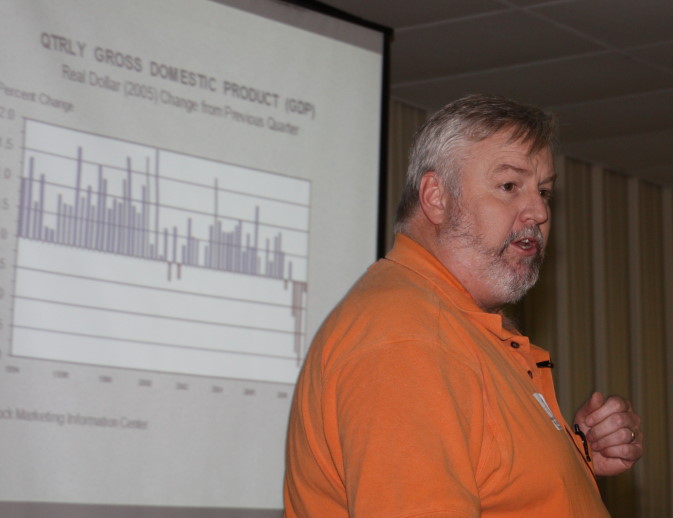
Agricultural News
Peel Offers Cattle Market Factors to Watch in 2015
Mon, 08 Dec 2014 13:26:48 CST

Derrell S. Peel, Oklahoma State University Extension Livestock Marketing Specialist, writes in the latest Cow/Calf Corner newsletter.
In 2014, cattle and beef prices advanced from (what were then) record levels at the beginning of the year to a nearly continuous series of record levels throughout the year. Cattle and beef prices are expected to maintain these levels in 2015, not increasing as much or as fast as in 2014 but averaging higher than 2014, and are likely to set new record prices seasonally during the year. For the most part, the same factors we have been watching in 2014 will determine how much higher cattle and beef prices will push in 2015.
The beef cow herd almost surely began expanding in 2014, though final confirmation will come in the annual Cattle report due out January 30, 2015. The question is more one of how much herd rebuilding happened in 2014. An increase of one-half to one percent in the beef cow herd is expected. Herd expansion is expected to continue in 2015 and for several more years but it is by no means guaranteed. Severe drought conditions persist in the far west and marginal to severe drought areas remain in the southern plains and southwest. These areas have the most potential for herd expansion, having been most depleted during the drought and continued drought or slow recovery in these areas will limit herd expansion in 2015. Feeder cattle supplies will continue to tighten into 2015 with a smaller 2014 calf crop, increased heifer retention and likely less cattle imports from Mexico and Canada. The 2015 calf crop may grow with limited herd expansion in 2014 but continued heifer retention in 2015 will keep feeder supplies tight.
Beef production is expected to decrease another 1-2 percent in 2015 following the 5-6 percent year over year decrease in 2014. Cattle slaughter will likely decrease another 1.5-2.5 percent in 2015 with fewer cows and yearlings in the slaughter mix. Steer and heifer carcass weights will remain large following the sharp increase in late 2014 and will average higher in 2015 but are unlikely to increase much above current record levels.
All eyes will continue to be on beef demand in 2015 as further reductions in beef supplies will push wholesale and retail beef values higher. Beef demand in 2014 was stronger than expected but additional meat supplies from increased pork and poultry production in 2015 will add additional pressure to retail beef markets. Retail beef prices are expected to continue increasing but feedlots and packers will struggle to maintain margins as high feeder and fed cattle prices will outpace the speed of wholesale and retail price adjustments.
International beef trade plays a role on both the demand and supply sides of the U.S. beef market. Beef exports are a component of total beef demand, enhancing value by providing markets for beef products, such as offals, which are undervalued in the U.S. and additional demand for muscle cuts. In 2014, total beef exports so far are close to year earlier levels including lower exports to Canada; slightly lower to Japan; but up sharply to Mexico, South Korea and Hong Kong. Record high U.S. beef prices are rationing export beef demand but only modest decreases in beef exports are expected in 2015. Beef imports supplement supplies of specific types of beef in the U.S. market; particularly lean beef for ground beef production to support the enormous U.S. appetite for hamburger. 2014 year to date beef imports are up sharply from drought-stricken Australia and up modestly from other major import sources including Canada, Mexico and New Zealand. Additional increases in beef imports are expected in 2015, primarily to partially offset continued reductions in lean beef supplies due to reduced cow slaughter. Continued strength in the U.S. dollar exaggerates the trade impacts due to exchange rates; making U.S. beef exports more expense and beef imports cheaper thus tending to decrease beef exports and increase beef imports.
WebReadyTM Powered by WireReady® NSI
Top Agricultural News
More Headlines...



















